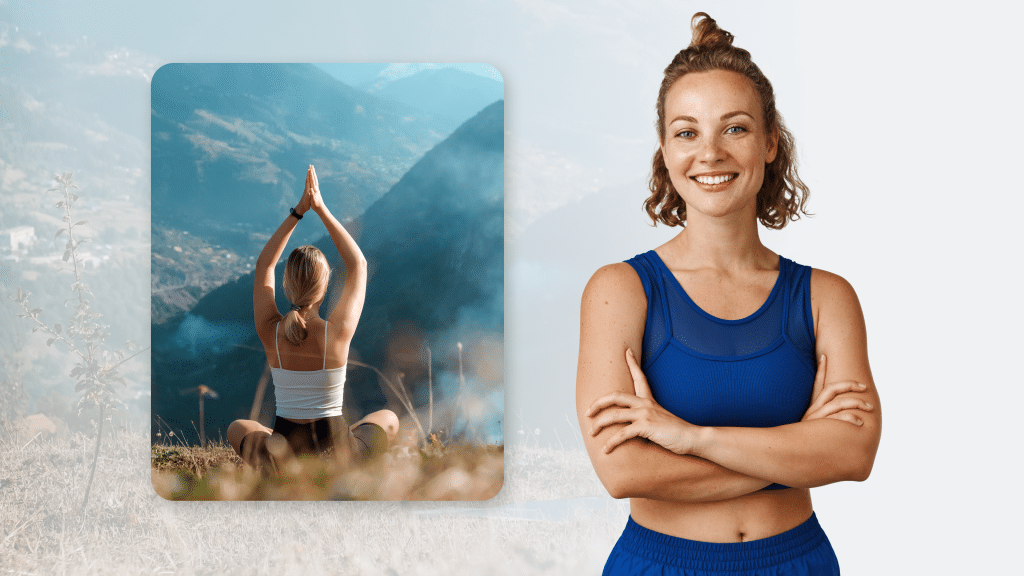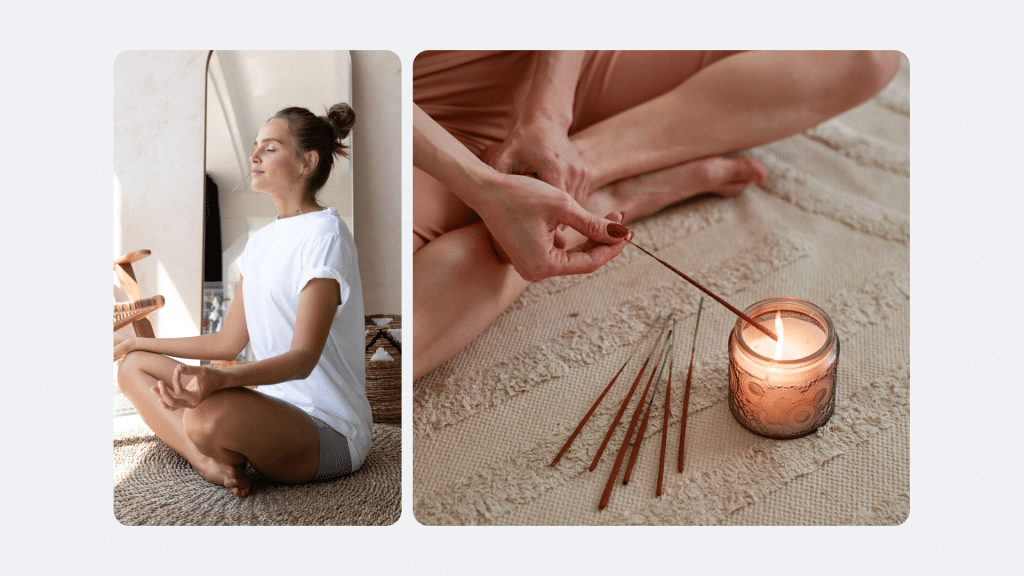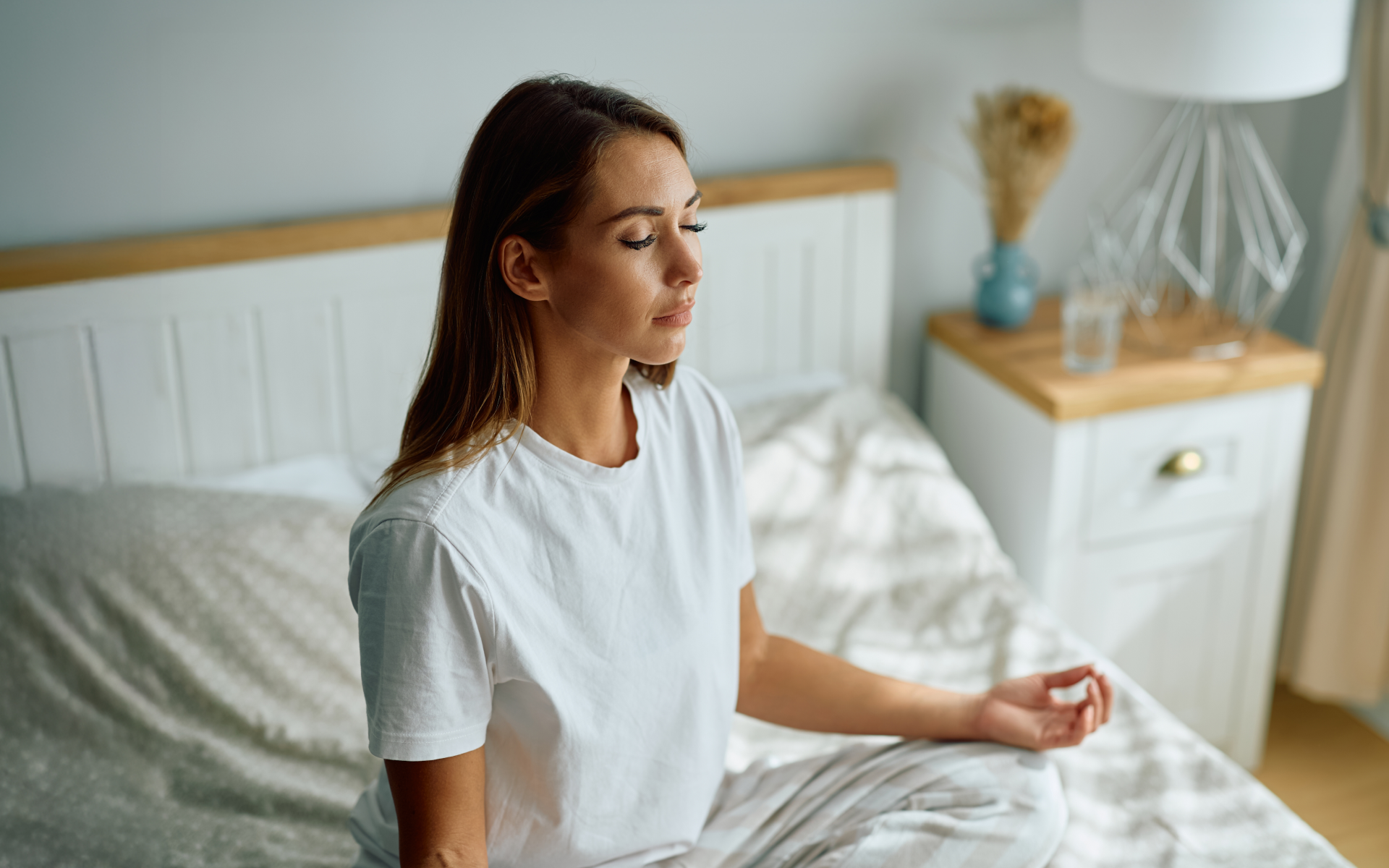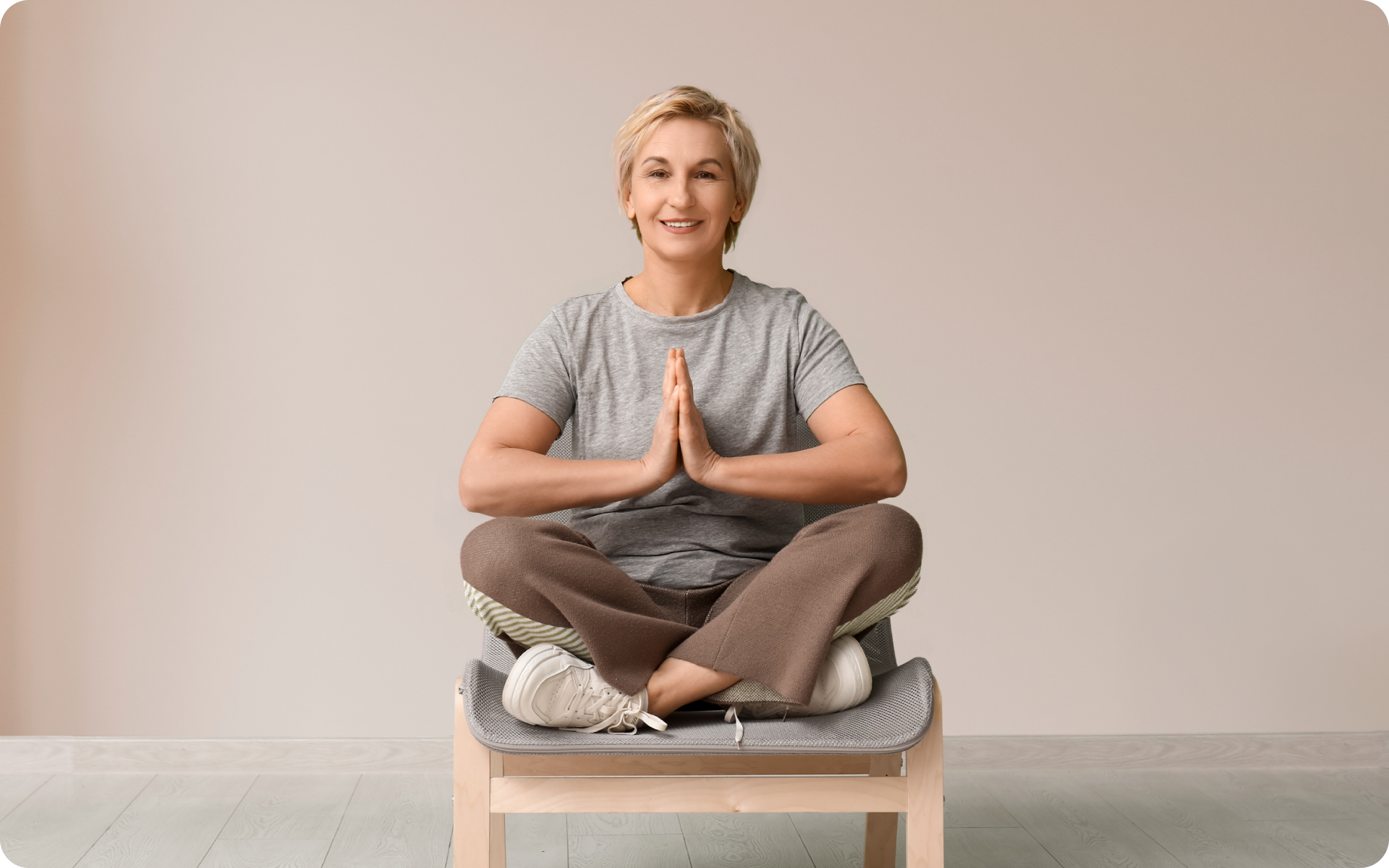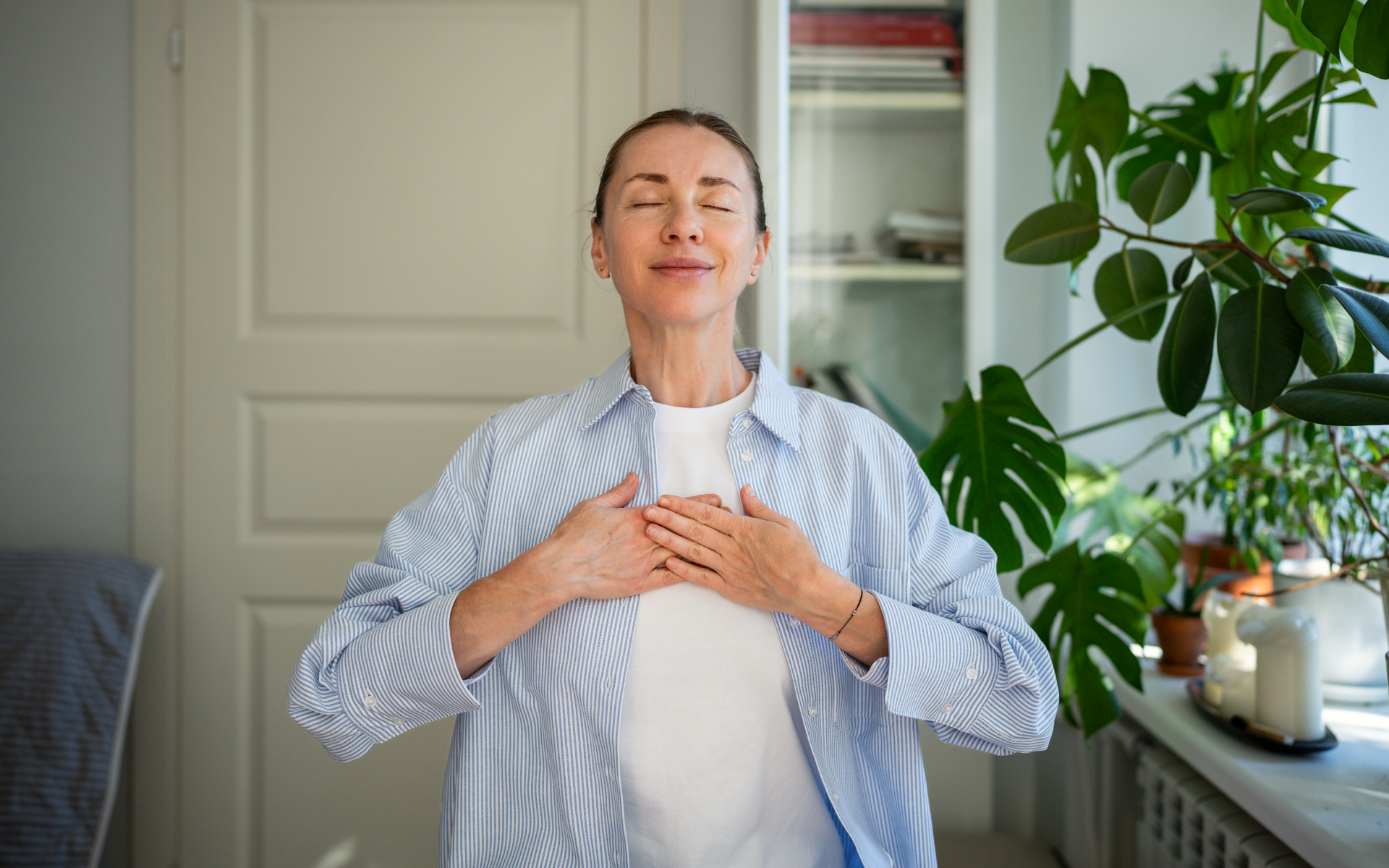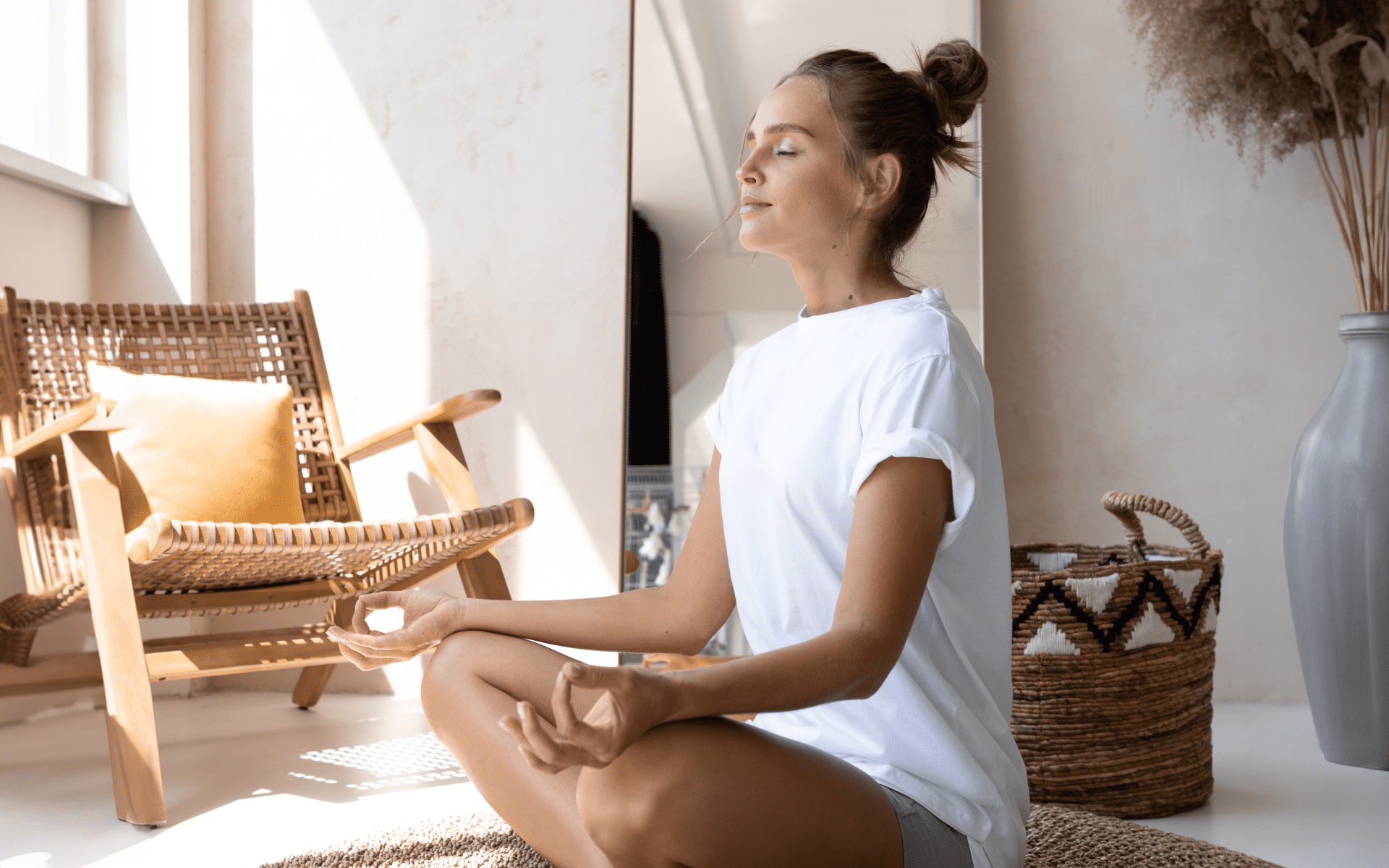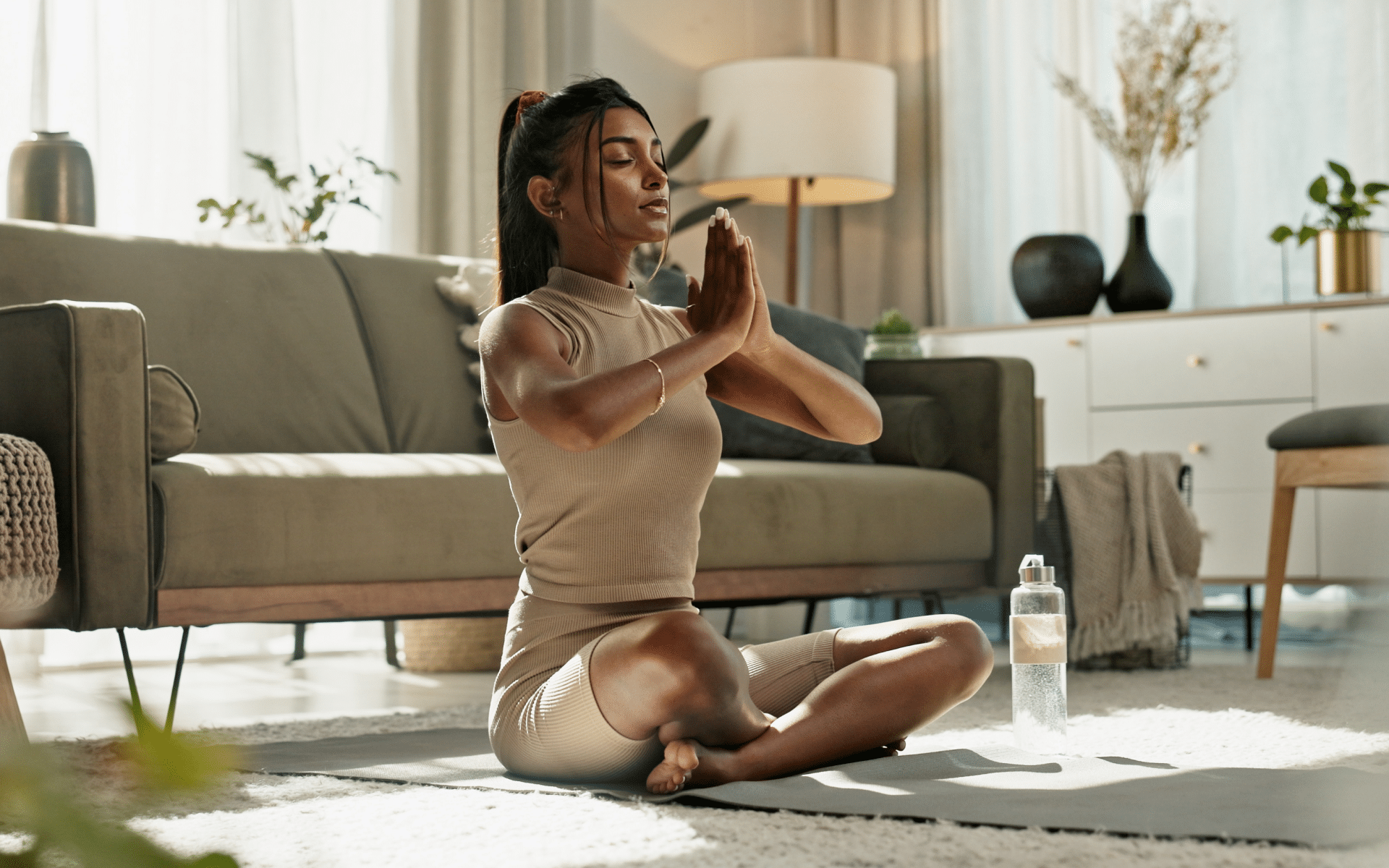Our minds and bodies are connected, and not just in the physical sense.
Research into the mind-body connection has shown that our mental and emotional well-being is deeply intertwined with our physical health (1).
Mindfulness, the practice of being present and aware in the moment, has gained popularity in recent years as a way of reducing stress and improving overall well-being (2).
Similarly, exercise has long been known to have numerous physical benefits (3), but it also plays an important role in maintaining mental health (4).
This understanding has led to an increased interest in practices that combine movement with mindfulness, such as yoga, tai chi, and qigong.
Collectively known as meditative movement, these practices offer a unique opportunity to integrate exercise and mindfulness into one holistic activity.
What Is Meditative Movement?
Meditative movement refers to any form of physical activity that incorporates both movement and mindfulness (5). It can be as structured as a specific yoga or tai chi class, or as simple as taking a mindful walk in nature.
The main focus is on being present and aware of the body’s movements, sensations, and breath while engaging in physical activity.
This combination allows individuals to cultivate a deeper mind-body connection and tap into the benefits of both exercise and mindfulness simultaneously.
The origins of meditative movement can be traced back to ancient Eastern practices such as yoga and qigong, which have been used for centuries to improve physical, mental, and spiritual well-being (6).
However, the concept of combining exercise with mindfulness has gained popularity in the Western world in recent years as a way to promote overall health and wellness.
Meditative movement isn’t a specific type of exercise, but rather a way of approaching any physical activity with mindfulness.
Based on this definition, any activity can become a meditative movement as long as it’s done with focused attention and intention.
What Are the Benefits of Meditative Movement?
Meditative movement has both physical and mental benefits:
Enhanced Stress and Anxiety Reduction
One of the most compelling benefits of meditative movement is its ability to reduce stress (7).
These practices also encourage deep breathing and focus on the present moment, reducing cortisol levels—the hormone often associated with stress. This shift in hormonal balance can lead to a profound sense of relaxation and well-being.
For those who are juggling busy schedules or dealing with daily anxieties, incorporating meditative movement into their routines can act as a soothing balm, transforming tension into tranquility.
A more balanced stress response can enhance your overall quality of life, which makes you more resilient in the face of challenges.
Improved Mental Clarity
Meditative movement can also enhance your cognitive function and mental clarity. By combining physical activity with mindfulness, these practices stimulate brain regions associated with memory, attention, and executive function (8).
Regular engagement can lead to sharper focus, improved problem-solving skills, and better decision-making abilities. The act of being fully present clears mental clutter, which allows you to process information more efficiently.
Whether you’re making important decisions at work or simply trying to conquer your to-do list, improved mental clarity can be a powerful tool in your cognitive arsenal.
Emotional Balance and Increased Resilience
Participating in meditative movement activities can lead to better emotional regulation and increased resilience. By fostering a deeper understanding of your inner landscape, these practices help you respond to emotions with more equanimity. This emotional awareness cultivates a steadier mood and can even reduce symptoms of anxiety and depression (9).
As you strengthen your ability to observe your thoughts and feelings without judgment, you’ll find it easier to navigate everyday ups and downs and more significant life challenges.
Emotional balance contributes to healthier relationships and a more fulfilling existence, deeply enriching your interpersonal connections.
Read more: What Does Meditation Feel Like: An Absolute Stillness Or A Whirlwind Of Feelings?
Enhanced Physical Health
While the mindfulness aspect of moving meditation is essential, let’s not forget about the physical perks. Such activities improve strength, and balance, which reduces the risk of injury and promotes overall physical health (10).
With consistent practice, you’ll notice increased energy levels and endurance. Engaging the body in mindful movement can enhance your sleep quality (11), contributing to better recovery and rejuvenation.
For many, these physical benefits make daily activities easier and more enjoyable, which results in a happier, more active lifestyle.
Cultivation of Mindfulness and Presence
At its core, meditative movement strengthens your mindfulness and presence. It trains your mind to focus on the here and now, making it easier to let go of worries about the past or future.
This practice encourages a non-judgmental awareness of your body and mind, fostering self-acceptance and a greater sense of peace (12).
By continuously redirecting your attention during these activities, you become more adept at maintaining mindfulness off the mat or away from practice.
This cultivated presence can enrich every aspect of life, allowing you to savor moments and live with greater intentionality.
With stress being a constant presence in our lives, taking time to process emotions, decompress and get into the right frame of mind is absolutely crucial. With BetterMe: Meditation & Sleep app your mental health is in good hands! Start using it now!
What Are the Types of Meditative Movement?
Any movement activity can be practiced mindfully, but some specific activities are often considered meditative movement practices. These include:
- Yoga
- Tai chi
- Qigong
- Pilates
- Walking meditation
- Dance meditation
- Feldenkrais method
- Alexander technique
- Trager approach
- Continuum movement
Yoga
Yoga is a holistic discipline that originated in ancient India over 5,000 years ago. It integrates physical postures, which are known as asanas, with breath control and meditation to foster a comprehensive mind-body-spirit connection (13).
Traditionally, yoga comprises several styles, including Hatha, Vinyasa, and Ashtanga, each of which focuses on different aspects of practice, such as strength, flexibility, and flow (13).
Yoga is typically practiced in sequences of poses, with practitioners moving through a series of postures while maintaining awareness of their breath. Postures can range from simple stretches to complex balancing acts, offering something for every skill level.
Tai Chi
Tai chi is a Chinese martial art known primarily for its defense training and health benefits. It was developed in the 17th century and combines slow, deliberate movements with synchronized breathing and a meditative focus.
Tai chi is often practiced in a series of graceful movements, or forms, that are traditionally performed in a specific sequence. This gentle practice emphasizes fluidity and balance and is renowned for enhancing coordination and reducing stress (14).
Many people practice tai chi to improve mental clarity and cultivate a sense of calm.
Qigong
Originating from ancient Chinese medicine, qigong is a practice that integrates physical posture, breathing techniques, and mental focus. With roots tracing back thousands of years, qigong is designed to cultivate and balance qi, or life energy (15).
Practices can range from simple, gentle exercises to complex sets of movements and stretches. qigong is often slower than tai chi and can be practiced in a seated, standing, or moving form. It’s widely used for health, spiritual growth, and martial arts training.
Pilates
Pilates is a system of exercises that was developed by Joseph Pilates in the early 20th century. It focuses on strengthening the body with an emphasis on core strength, which supports overall fitness and well-being (16).
Originally created to help with rehabilitation, Pilates involves a series of controlled movements that are performed on a mat or using special equipment. Each exercise is designed to improve flexibility, strength, balance, and body awareness (16).
Pilates emphasizes precision, concentration, and control, which makes it a popular choice for aligning the body and mind.
Read more: 10 Benefits of Pilates: Why it’s Good for You
Walking Meditation
Walking meditation combines the meditative act of mindfulness with the physical activity of walking (17).
Unlike traditional seated meditation, this practice invites you to be present with each step. It can be practiced almost anywhere, which makes it a flexible addition to any daily routine.
The practice involves focusing on the flow of footsteps, the sensation of movement, and breath awareness. Walking meditation helps integrate mindfulness into everyday life, offering a straightforward approach to reducing stress and enhancing awareness.
Dance Meditation
Dance meditation transforms traditional meditation into an expressive and freeing movement practice. It has no strict origins but is born out of the human instinct for rhythmic movement.
The practice invites participants to immerse themselves in music and move freely, allowing their bodies to express whatever arises without judgment.
Dance meditation fosters creativity, emotional release, and presence, merging movement with mindfulness (18). It’s particularly beneficial for individuals who find stillness challenging.
Feldenkrais Method
The Feldenkrais method, which was developed by Moshe Feldenkrais, is a movement-based approach focused on improving human functioning by increasing self-awareness through movement. It originated in the mid-20th century and emphasizes exploring the body’s movement potential (19).
The method is practiced through structured lessons, known as “Awareness Through Movement,” which involve gentle movements, stretches, and pauses to enhance body awareness. It’s used for rehabilitation, enhancing physical performance, and stress relief.
Alexander Technique
The Alexander technique is an educational process that was developed in the early 20th century by Frederick Matthias Alexander. It focuses on improving posture and movement to reduce pain and stress (20).
The technique teaches individuals how to recognize and change habitual movement patterns that compress the body, using gentle hands-on guidance and verbal instruction.
In practice, it involves simple activities that are designed to promote balance, freedom, and aligned movement, enhancing the ease of everyday physical activity.
Trager Approach
The Trager approach, which was developed by Dr. Milton Trager in the mid-20th century, is a movement therapy that is designed to explore psychological and physiological processes through gentle movement and touch (21).
This method involves passive movement sequences guided by a practitioner to help release deep-seated tension patterns. It includes a self-care movement practice called Mentastics®, which encourages ease and freedom of movement. It’s often used for pain relief and enhancing body awareness.
Continuum Movement
Continuum movement is a somatic practice that explores the connection between movement, breath, and the act of being. It was founded by Emilie Conrad in the 1960s and draws inspiration from fluid systems in nature and within the body (22).
It involves undulating, wave-like movements and sounds that engage the entire body, promoting a deep sense of presence and embodiment. Continuum encourages listening to the body’s intrinsic movements, which can lead to enhanced flexibility, emotional release, and a sense of flow.
How to Incorporate Meditative Movement into Your Routine
Incorporating movement meditation into your routine doesn’t need to be complicated or time-consuming. Here are a few simple ways to get started:
- Start with small changes: You don’t need to commit to a full hour of mindful movement every day. Start by incorporating short, 5-minute practices throughout your day.
- Find what works for you: Not every form of mindful movement will resonate with everyone. Experiment and find the practices that feel best for your body and mind.
- Set intentions: Before you start any practice, set an intention for what you hope to gain from it, whether it’s stress relief, increased focus, or physical strength.
- Take breaks throughout the day: Rather than sitting for long periods, take a few minutes to stand up and stretch or do some gentle movements. This can help break up sedentary habits and promote physical and mental well-being.
- Find community: Consider joining a class or group that practices mindful movement together. Connecting with others who have similar interests can enhance your experience and keep you motivated.
Remember, the key to incorporating mindful movement into your routine is consistency. Don’t be discouraged if it feels challenging at first. With practice, it will become more natural, and you’ll reap the many benefits of these practices on your mind, body, and overall well-being.
BetterMe: Meditation & Sleep app can help you transmute stress into serenity, pull you up from the doldrums, free your mind from the cares and worries of the world, quell racing thoughts and infuse you with tranquility! Start using it now and change your life!
Mistakes to Avoid
When incorporating meditative movement into your routine, it’s important to be aware of potential mistakes that can hinder your progress. These include:
- Pushing too hard: Mindful movement should not feel forced or strenuous. Listen to your body and avoid pushing yourself beyond your limits.
- Not being present: It’s easy to allow the mind to wander during a physical practice, but try to stay fully present with each movement and breath.
- Comparing yourself to others: Every person’s experience with mindful movement is unique. Avoid comparing yourself to others and focus on your own journey.
Moving meditation may feel awkward or challenging at first. Be patient and kind to yourself as you explore these practices, and remember that progress takes time.
Frequently Asked Questions
What are the best practices for incorporating meditative movement into daily life?
Incorporating meditative movement into your daily routine can be a transformative experience. Start by setting aside a specific time each day to practice, even if it’s just 10–15 minutes. Morning or evening tends to work well for most people.
Create a dedicated space that is quiet and free of distractions, where you can focus on your practice. Start with simple movements, focusing on your breath and how your body feels with each motion.
Try to:
- Start with guided sessions if you’re new.
- Gradually increase the duration and complexity of your movements.
- Integrate meditative movements into daily activities, such as mindful walking or stretching.
Can meditative movement be practiced by anyone, regardless of fitness level?
Meditative movement is accessible to everyone, regardless of their fitness level. Its flexibility allows individuals to adapt movements to their own capabilities, which makes it inclusive. Whether you’re a seasoned athlete or someone who is just starting their fitness journey, you can tailor the intensity and style to suit your needs.
For those with mobility issues, chair yoga or seated tai chi are excellent alternatives. Always listen to your body and modify movements as needed. The focus is on gentle, mindful motion, which makes it suitable for all.
How does meditative movement differ from traditional exercise routines?
Movement meditation differs from traditional exercise routines in several key ways. While traditional exercises often focus on physical intensity and achieving specific fitness goals, meditative movement emphasizes the mind-body connection and awareness.
Key differences include:
- Focus on mindfulness and breathing over speed and reps.
- Emphasis on the flow of movement and mental clarity.
- Encouragement of relaxation rather than exertion.
- Incorporation of restorative practices that prioritize rest and healing over physical output.
- The use of intuitive, organic movements that adapt to the practitioner’s internal state instead of structured repetitions.
- Engagement of the nervous system in a calming manner, which often results in reduced stress and an enhanced sense of well-being.
This approach fosters a sense of calm and balance, which makes it a holistic practice for both mental and physical health.
What should I expect from a meditative movement session?
A meditative movement session typically begins with centering yourself, often through breathing exercises. Expect a calming atmosphere, possibly with soothing music or natural sounds. The session will guide you through a series of gentle movements that are designed to increase awareness and relaxation.
During the session, you may:
- Experience a deepened sense of body awareness.
- Notice an improvement in your concentration and mood.
- Feel more relaxed and rejuvenated afterward.
Note that exactly what you experience will vary depending on the type of practice. For example, tai chi may require more focus and concentration, while yoga may prioritize relaxation and flexibility. Regardless of the specific practice, you should feel a greater sense of calm and connection to your body by the end of the session.
How often should meditative movement be practiced?
The frequency of practising movement meditation can vary based on individual preferences and schedules. However, for optimal benefits, it is recommended to aim for at least 3–4 sessions per week. Consistency is the key to experiencing long-term benefits such as improved mental clarity, reduced stress, and enhanced physical flexibility.
Remember, even short daily sessions are beneficial. The important thing is to make it a regular part of your routine and allow yourself to gradually deepen your practice over time.
The Bottom Line
Meditative movement is simply the act of moving with mindfulness and intention. It can take various forms, from yoga and tai chi to walking or even dancing. By incorporating these practices into your daily routine, you can reap numerous physical, mental, and emotional benefits.
Remember to listen to your body, stay present in each movement, and be patient with yourself as you explore this powerful form of self-care. With consistency and dedication, mindful movement can enhance your overall well-being in profound ways.
DISCLAIMER:
This article is intended for general informational purposes only and does not serve to address individual circumstances. It is not a substitute for professional advice or help and should not be relied on for making any kind of decision-making. Any action taken as a direct or indirect result of the information in this article is entirely at your own risk and is your sole responsibility.
BetterMe, its content staff, and its medical advisors accept no responsibility for inaccuracies, errors, misstatements, inconsistencies, or omissions and specifically disclaim any liability, loss or risk, personal, professional or otherwise, which may be incurred as a consequence, directly or indirectly, of the use and/or application of any content.
You should always seek the advice of your physician or other qualified health provider with any questions you may have regarding a medical condition or your specific situation. Never disregard professional medical advice or delay seeking it because of BetterMe content. If you suspect or think you may have a medical emergency, call your doctor.
SOURCES:
- The relationship between physical and mental health: A mediation analysis (2017, sciencedirect.com)
- What are the benefits of mindfulness? (2012, apa.org)
- Exercise sustains the hallmarks of health (2024, sciencedirect.com)
- Role of Physical Activity on Mental Health and Well-Being: A Review (2023, ncbi.nlm.nih.gov)
- Editorial: Meditative movement for mental and physical health (2023, frontiersin.org)
- Meditation: Process and effects (2017, ncbi.nlm.nih.gov)
- Meditative Movement for Depression and Anxiety (2013, frontiersin.org)
- Brief, daily meditation enhances attention, memory, mood, and emotional regulation in non-experienced meditators (2019, sciencedirect.com)
- Mindfulness and Behavior Change (2020, ncbi.nlm.nih.gov)
- Benefits of Physical Activity (cdc.gov, 2024)
- The effect of meditative movement on sleep quality: A systematic review (2016, pubmed.ncbi.nlm.nih.gov)
- The Mindful Self: A Mindfulness-Enlightened Self-view (2017, frontiersin.org)
- Exploring the therapeutic effects of yoga and its ability to increase quality of life (2011, ncbi.nlm.nih.gov)
- Determining the safety and effectiveness of Tai Chi: a critical overview of 210 systematic reviews of controlled clinical trials (2022, biomedcentral.com)
- A Comprehensive Review of Health Benefits of Qigong and Tai Chi (2010, ncbi.nlm.nih.gov)
- Pilates (2011, ncbi.nlm.nih.gov)
- Put Intention Behind Your Walking Meditation (2024, health.clevelandclinic.org)
- Conscious dance: Perceived benefits and psychological well-being of participants (2021, sciencedirect.com
- The Effectiveness of the Feldenkrais Method: A Systematic Review of the Evidence – Hillier – 2015 (2013, onlinelibrary.wiley.com)
- Alexander technique (2021, nhs.uk)
- The Trager Approach Defined (n.d., trager.com)
- Mission and Value Statements – Continuum Movement (n.d., continuummovement.com)


